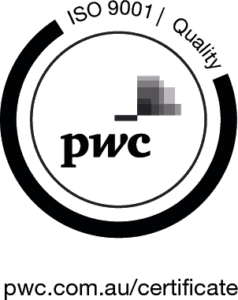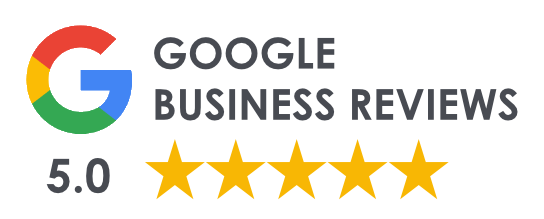How well are you managing change?
Oddly enough, the requirements of ISO 9001:2015 for managing change in an organisation under clause 6.3 ‘Planning of Changes’ is very often overlooked, even though the process of achieving ISO 9001 certification is a significant change for the business in itself.
The organisation’s journey to meet the requirements of the Quality Management best practices affects everyone and everything. Yet, common practice reveals that organisations often create a shiny new role for a person, to whom the process is handed over, and he or she is expected to manage the project alongside the organisation’s “business as usual” activities rather than blend the requirements of the Quality Management Standard into day-to-day operations.
Achieving certification is not a standard project with a predefined start and end. It’s a commitment to continuous improvement and innovation embedded in the organisation’s DNA. However, improvements and innovations are not the only stimuli that drive the change. Fundamentally a change is anything that requires a new way of doing things and affects people’s lives. For instance; a new office location, new regulations, mergers and acquisitions, etc.
Let me ask you a few questions…
If you answered the first two questions as ‘no’ and the last one as ‘yes’, then you may wonder why some of your projects were not successful and fully implemented.
This article will outline some of the critical areas that need to be considered when pursuing a new or different way of doing things in your business — the change.
1. Leadership
“Nothing gets done without the support of a leadership team.”
If you think about pursuing a change, you need to know the reason why the change has to happen. The reason must be clear and logical and you, as a leader, should be able to explain the purpose of the change to other employees in simple language.
Be ready to explain why the change is better than the current situation and what would happen if you don’t pursue the change. The entire leadership team must be positive about the change.
If the change is achieving certification, the entire leadership team must be on the same page. The change will be successful only through your people. Documented information such as Procedures, Templates and Registers are just tools to be used by your employees. Your focus should shift from “what will we develop” to “how we will use it” so don’t separate people from the technical factors.
2. Roles and Responsibilities
“Accountability vs responsibility.”
Everyone needs to understand what their roles in the project are. Every project needs to have a dedicated sponsor (or owner). This is the person accountable for the overall project.
If you’ve created a project charter then you can allocate the resources with clear responsibilities and what you expect from them in this particular project. Bear in mind that the project is very often additional work to your employees’ day-to-day activities, so make sure you allocate the time accordingly and you have considered their existing workload.
3. Objectives of the Change
“You can’t effectively work towards an idea.”
You need to define the future state of the change, the final product, so everyone has the same vision about “what the change will look like.” The future process must be portrayed as good as if it was a final tangible product.
You can use your project charter where you define the characteristics of “done”. Be specific, determine the objectives, benefits and how these relate to roles and responsibilities – Who, What, When, How, Where. Don’t forget that every project carries risks and you need to consider these risks to avoid disruptions alongside the project — for instance, resources, knowledge, ability, finance etc. Most importantly, ensure that the change you propose is aligned with the organisation’s overall strategy and vision.
For instance, if the change is related to process improvement, be specific and determine objectives you want to achieve. These objectives must be measurable.
4. Understand your people
“It’s a brilliant idea; why doesn’t she like it?”
Not everyone will share your enthusiasm about the proposed change, and this is completely natural. Make sure you understand what the organisational culture and the mood about the change is. Who will be affected by the change and if everyone understands its impact. The resistance can take many forms, and you need to be aware that not everyone will openly say what they think about the change.
The following examples could help you identify some types of resistance:
It’s vital that you listen to your people and ask questions, rather than giving them orders. You can organise meetings to ask what people think about the change, what they need to complete and if they have everything they need to succeed. For instance, an anonymous questionnaire could provide valuable feedback.
5. Project Champions
“My manager thinks it’s nonsense and I agree with him.”
Do you know who the “go-to person” is in your business? That’s great, but most importantly, you need to ask whether this person is on your side. The trusted authority is a great help when pursuing a change. Not only can he or she change minds of adversaries, but this person can actively help you lead the change and train other people.
If the impact of the change is quite complex you can complete a quick stakeholders’ assessment and define who supports the change, who is against it, and who is undecided. This will give you an idea about the approach you will need to develop.
6. Evaluation
“Well done everyone.”
The most critical part of any change is to ensure that we have achieved all the objectives from what we had defined. There is no trade-off, and meeting 70% of goals is not success, because it is only 70% return on investment. Imagine that you open an account with a bank that promises to pay you 8% interest, but they only pay you 5.6%. Would you accept that if the interest was your deciding factor?
Before you call it done, ensure that you really have achieved what was discussed and you are able to measure your achievements.
You can conduct internal audits and review Key Performance Indicators (KPIs). Ensure that you provide ongoing support so the change can stick. Ensure that people won’t go back to following the old way of doing things. Make sure that your new KPIs are aligned with the new processes or activities and your rewards support this change. This is the most sensitive area where your effort can be thrown away if you celebrate your victory too early.
7. Complexity
“Fit for purpose.”
You can find dozens of supporting models for managing change in an organisation. However, not all fit one size, and therefore you need to understand how and when to apply the individual models and frameworks before diving into the change process.
The goal of the models is not the application itself; the objective of the change is the successful completion of the change that gives business value (Return on Investment). You should consider factors such as size, timeframe, nature of the change, culture and other relevant criteria.
Don’t be afraid to ask for help if you are not sure how the change will turn out or if you don’t have sufficient resources, because a lousy change implementation can turn sour. Focus on Return on Investment, and if there is none, then you should re-evaluate your reasons, because if there is no value, why change things?
References:
Verne Harnish – Scaling up 2014
Change Management Mastery – Siobhan Sutherland Rogers 2015
About the author
Ivona has been developing and implementing customised management systems for our clients across a wide range of industries, to meet the certification-readiness requirements of ISO 9001, ISO 14001 and ISO 45001. She is also an internal auditor, and has a Master of Business Administration and a Diploma in ISO Integrated Business Management Systems. She’s also passionate about sustainability and the environment.
All information on this blog site is for informational purposes only. As this information is based on our professional experience, opinion, and knowledge, we make no representations as to the suitability of this information for your individual business circumstances. Especiality Pty Ltd trading as ISO Certification Experts and all related businesses and brands will not be liable for any errors, omissions, legal disputes or any damage arising from its display or use. All information is provided as is, with no warranties and confers no rights.
We will not be responsible for any material that is found at the end of links that we may post on this blog site. The advice, ideas, and strategies should never be used without first assessing your own personal business situation or seeking professional and/or legal advice. Information may also change from time to time to suit industry and business needs, requirements and trends.















